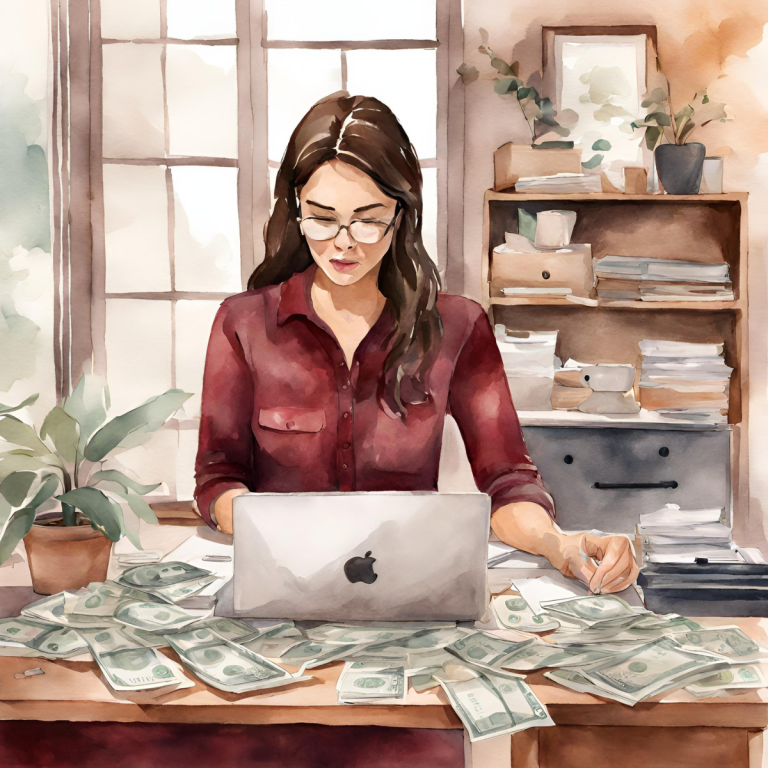The Physiology of Spending: How Your Instagram Feed is Draining Your Wallet
Do you know what’s scarier than your bank account balance after a weekend shopping spree?
Your Instagram feed.
Yep, you heard me right.
That innocent little scroll through perfectly curated squares of tropical vacations, and influencers lounging in designer outfits is doing more damage to your wallet than you might think.
You probably clicked on this post expecting a few tips on saving money or managing your budget.
Well, buckle up, because we’re about to dig into something way deeper the sneaky, psychological tricks that Instagram is using to turn your hard-earned cash into someone else’s profits.
Why Your Brain Can’t Resist Instagram’s Trap

Imagine It’s a lazy Sunday afternoon.
You’re chilling on the couch, scrolling through Instagram (because, honestly, what else is there to do?).
You see an influencer sipping on a $12 matcha latte from a cafe that looks like it was plucked straight out of a Pinterest board.
“Cute,” you think.
Next, you see your friend posting a selfie with a brand new outfit from that trendy boutique you’ve been eyeing.
“That dress is fire,” you mumble to yourself.
And then, BAM, an ad pops up for the exact pair of sneakers you’ve been debating buying all week.
“They are on sale…”
Before you know it, you’re reaching for your credit card, and just like that, you’ve spent $100 you didn’t plan to.
What the heck just happened?
Why couldn’t you resist?
It’s not just you, your brain was wired this way, and Instagram knows it.
Let me explain.
The Dopamine Trap: How Instagram Turns “Likes” Into Purchases

Let’s get down to the science of it.
Ever heard of dopamine?
It’s that little chemical in your brain that makes you feel good—like, really good.
Every time you see something you like on Instagram (think: your friend’s new puppy, a gorgeous sunset, or a particularly juicy meme), your brain gives you a tiny hit of dopamine.
It’s like a mini celebration happening in your head.
But your brain starts to crave more of that feel-good chemical.
And guess what triggers a whole bunch of dopamine?
Shopping.
That’s right, buying stuff releases a nice, big surge of dopamine, which is why it feels so darn satisfying to click “add to cart” and hit that checkout button.
Instagram is like a dopamine minefield, strategically placing ads and influencer posts in front of you at just the right moments to maximize your brain’s pleasure response.
It’s a perfect storm that leaves your wallet lighter and your brain wondering what the heck just happened.
The Influence of Influencers: Why You’re Spending Money on Things You Didn’t Know You Needed
Be honest—how many times have you bought something because an influencer recommended it?
Don’t worry, I’m not here to judge.
We’ve all been there.
But let’s talk about why this happens.
When you see your favorite influencer (you know, the one with the flawless skin, perfect life, and an army of followers) raving about a product, your brain doesn’t see it as an ad.
Nope.
Your brain interprets it as a recommendation from a friend.
And let’s be real, if your friend tells you that a certain moisturizer will give you glowy, dewy skin like you just walked off the set of a K-beauty commercial, you’re probably going to give it a try.
But influencers aren’t just friends they’re aspirational.
You don’t just want to use the same products as them; you want to be like them.
And so, you buy the moisturizer, the dress, the phone case, the whatever-it-is, because on some level, you think it’ll get you a little closer to that Instagram-perfect life.
The Fear of Missing Out: How FOMO Is Messing with Your Finances

FOMO—our old friend.
The Fear of Missing Out is one of the most powerful motivators on the planet.
And Instagram?
It’s basically a FOMO factory.
Every time you open the app, you’re bombarded with images of people doing cool things, wearing cool clothes, eating cool food, and living cool lives.
And there you are, sitting on your couch in your sweatpants, wondering if you’re missing out on something.
Instagram wants you to feel this way.
FOMO is a huge driver of consumer behavior.
When you see someone else enjoying something, your brain starts to convince you that you need it too.
That if you don’t buy those concert tickets, book that vacation, or snag that limited-edition handbag, you’ll be missing out on something amazing.
And so, you buy it, sometimes without even thinking.
But FOMO is an illusion.
You’re not actually missing out on anything, because the truth is, no one’s life is as perfect as it looks on Instagram.
It’s all carefully curated, edited, and filtered to make you feel like you need more—more stuff, more experiences, more everything.
And that’s where your wallet takes a hit.
The Power of Peer Pressure: Keeping Up with the (Instagram) Joneses
Remember that feeling in high school when everyone had the latest pair of sneakers, and you just had to get them too?
Well, Instagram is like high school, but on steroids.
When you see your friends, acquaintances, or even strangers living their best lives and flaunting their new purchases, it’s hard not to feel like you need to keep up.
And this isn’t just about big purchases like cars or vacations, it’s the little things too.
The artisanal coffee, the eco-friendly water bottle, the subscription box that delivers fresh flowers to your door.
It all adds up.
Peer pressure on Instagram isn’t just about wanting what other people have—it’s about the desire to belong, to be part of the in-crowd.
If everyone else is doing it, you feel like you should be doing it too.
And so, you click “buy now” on that ridiculously overpriced smoothie bowl, even though you know you could make one at home for a fraction of the price.
But the thought of posting a homemade version on Instagram?
Not as appealing.
The Endless Scroll: How Instagram Keeps You in the Spending Loop
Instagram is designed to be addictive—there’s no denying it.
The endless scroll, the constant updates, the notifications that light up your phone like it’s Christmas morning, all keeps you coming back for more.
And the more time you spend on the app, the more opportunities Instagram has to show you things to buy.
Instagram is a master of the “recency effect,” which means the last thing you saw is often the first thing on your mind.
So, if you’re scrolling through your feed and see an ad for those trendy sneakers, then a post from your favorite fashion blogger wearing them, and then a story from your friend who just bought a pair—guess what’s going to happen?
That’s right, you’re going to start convincing yourself that you need those sneakers.
And the cycle continues.
Instagram knows that the more you see something, the more likely you are to buy it, which is why the app is constantly feeding you content designed to tempt you into spending money.
Breaking the Cycle: How to Stop Instagram from Controlling Your Wallet
Alright, so now that we’ve established that Instagram is basically a well-oiled machine designed to drain your bank account, what can you do about it?
Because let’s be real—you’re not going to delete the app (and I wouldn’t expect you to).
But there are ways to take back control.
- Be Mindful of Your Scroll: The first step is awareness.
Be conscious of how much time you’re spending on Instagram and how it’s affecting your spending habits.
If you find yourself reaching for your credit card every time you open the app, it might be time to take a step back.
- Unfollow the Temptations: If certain accounts or influencers are always making you want to buy things you don’t need, it’s okay to unfollow them.
Your wallet will thank you.
- Set a Budget: Decide how much you’re willing to spend on Instagram-inspired purchases each month and stick to it.
This way, you can enjoy the occasional splurge without going overboard.
- Practice the 24-Hour Rule: Before making any impulse purchases, give yourself 24 hours to think about it.
If you still want it the next day, go ahead and buy it.
But often, you’ll find that the urge passes, and you’ve saved yourself some cash.
- Use Instagram as Inspiration, Not a Shopping List: Remember that Instagram is a place for inspiration, not a shopping list.
It’s okay to admire someone else’s lifestyle or fashion choices without feeling the need to replicate them.
The Bottom Line: You’re in Control of Your Spending
Instagram might be a powerful tool for influencing your spending, but you have the ultimate control.
By being aware of the psychological tricks at play and taking steps to counteract them, you can enjoy your time on Instagram without letting it take over your wallet.
So, the next time you find yourself tempted to buy something just because you saw it on your feed, take a deep breath, put down your phone, and remember—you are in control.
Your money, your choices, your life.
Happy scrolling, but more importantly, happy saving.






